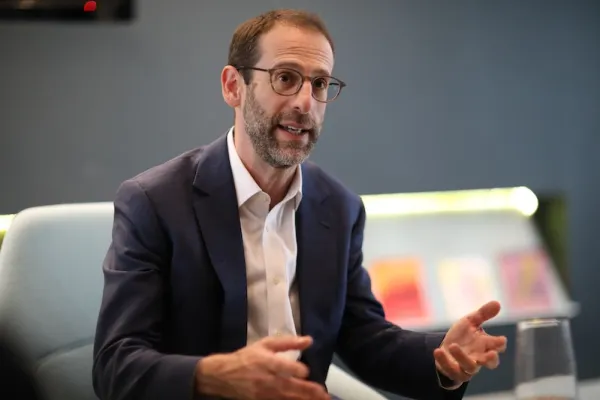Legal & General Group has a U.K. property empire worth £11 billion ($17.1 billion) that includes things ranging from the Rolls Building, home to the U.K. High Court’s financial and business divisions, to retail emporiums like the Westgate Leisure Park, a large shopping center southwest of London. Now the U.K. insurer is looking to add property loans to its portfolio.
In 2012, L&G dipped its toe into the lending market by extending a £121 million debt facility to Unite Group, the U.K.’s largest developer and manager of student accommodation. The ten-year loan, secured by ten student housing properties, carried a fixed rate of 5.05 percent and sported a 60 percent loan-to-value ratio. The insurer has done two more deals this year. In January, it extended a ten-year, £120 million debt facility to Bruntwood, a Manchester-based commercial property company; in March, it provided a £102 million, 15-year debt facility to The Hyde Group, a major English housing association, or nonprofit provider of affordable housing.
Those three deals are “just a drop in the ocean” of what the company hopes to achieve, says Ashley Goldblatt, head of London-based LGIM Commercial Lending, the insurer’s real estate debt financing vehicle. “We would like a loan portfolio in the billions of pounds two years from now,” he says.
L&G is one of a growing number of insurers and institutional investors that see a big opportunity in direct lending, both for property and for general corporate purposes. They are moving into a space vacated by European banks, which are shrinking their balance sheets in response to economic pressures and higher capital requirements. PricewaterhouseCoopers, the professional services firm, estimates that European banks will need to shed as much as €3.4 trillion ($4.5 trillion) in assets over the coming years by selling existing loans and cutting the volume of new ones.
“We are a phenomenon generated by a dysfunctional market”, says Michael Guy, senior portfolio manager at London-based Tenax Capital, which raised €200 million from European investors last year to launch a direct lending vehicle, the Credit Opportunities Fund. “In the medium to long term, I think the trend is for nonbanks to provide more credit.”
M&G Investments, a £238 billion investment firm owned by U.K. insurer Prudential, has two funds dedicated to direct corporate lending. M&G UK Companies Financing Fund, set up in 2008, has invested £930 million. Its most recent disclosed deal, in June 2012, was a £100 million loan to Drax Group, a FTSE 250 company that operates the largest coal-fired power station in Western Europe. M&G is also one of six fund managers that have co-invested in direct lending in partnership with the U.K. Finance ministry through the Business Finance Partnership. The partnerships manage a total of £1.9 billion in loans, of which £1 billion is from private investors.
Private equity firms are also getting in on the game. In April, KKR Asset Management made a €320 million loan to Ursa Insulation, a subsidiary of Spanish building materials company Uralita. GSO, the credit arm of Blackstone, is also active in the European market.
Overall, fund managers estimate that investors have committed or earmarked about €15 billion for direct lending across Europe.
The attraction for these investors is clear: high yields. M&G has a relatively conservative target return of 4 percent over LIBOR. Other firms have more-ambitious aims that involve lending to riskier borrowers. Elvire Perrin, partner and head of research at Altius Associates, a London-based private equity advisory and fund-of-funds firm with $23 billion in assets under management or advice, says many specialist direct lending funds seek returns of 12 to 15 percent before accounting for the effects of leverage. These lenders typically offer funds at a rate of 7.5 to 10 percentage points over LIBOR plus an arrangement fee equivalent to a further 1.5 points on an annualized basis.
At a time when ten-year U.K. government bonds yield a modest 2.70 percent and corporate bond spreads remain historically tight, such rates are very attractive.
Lenders have to work for such returns, though, a fact that so far has tended to lessen the competition.
Before making its loan to Unite, L&G had to do its homework to figure out how to value the expected revenue stream from student accommodation, a fairly new segment of the U.K. property market. “We had to educate ourselves about the nature of the assets and how they are managed,” says LGIM Commercial Lending’s Goldblatt. The insurer’s three direct lending deals were the culmination of about 600 face-to-face meetings with potential borrowers and other interested parties over the past two years. Direct lending also entails additional work in terms of servicing the loans. “It’s all really labor-intensive”, says Goldblatt.
At Tenax Guy says the detailed work means the fund can reach only about one loan deal a month. “We kiss quite a few frogs to get to know someone we like,” he says. Largely as a result, the fund has so far drawn down only about half of investors’ commitments.
Investors say they can achieve low-double-digit returns by lending to financially sound companies because banks have cut back so sharply or tightened their lending criteria so drastically. They refer to the illiquidity premium, or the extra interest margin that direct lenders can charge compared with what a bank would typically demand.
Kipp deVeer, a senior partner at Ares Management, a New York–based investment group that manages $59 billion, puts the premium charged by direct lenders at between 1 and 4 percentage points. The upper end of this range might be for “a custom solution that is a little larger or has a little more complexity. It could also be that it simply doesn’t fit into the banks’ more rigid underwriting procedures given their new regulatory and capital requirements,” he explains. DeVeer divides his time between New York and Europe, where the firm’s Ares Private Debt Group manages some $4.5 billion. The firm typically extends loans of five to seven years in duration for amounts of between €10 million and €75 million. Its lending is often driven by specific events such as acquisitions, leveraged buyouts and recapitalizations.
Investors say they are also willing to be more flexible about loan structures and covenants than banks. “If a borrower says, ‘We can’t afford to amortize the loan, we need all the cash to reinvest in the business,’ we might say we’re happy to do it,” says Tenax’s Guy. “We might take all the interest payments at the end of the loan or take some portion of the remuneration in the form of equity warrants.”
Many direct lenders have focused their activity on Northern Europe, where economies and creditworthiness have performed better since the crisis. Ares, for instance, has concentrated its lending on the U.K., Germany, France and Scandinavia, and largely shunned countries such as Greece, Portugal and Spain, which have been hit hard by the euro area debt crisis. “We tend to be oriented to invest in performing companies in healthy geographies” is how deVeer puts it.
Other investors are prepared to venture into the euro area periphery in search of higher yields. KKR spent two years looking for the right opportunity in Spain before the Uralita deal, says Mubashir Mukadam, head of European special situations in the firm’s London office. The firm ended up making the loan because it had a private equity expert with deep knowledge of the building materials industry who could see that although Uralita was suffering from the downturn in the Spanish and European economies, demand for its insulation products should grow in the long term because of European governments’ green agenda. KKR Capstone, the group of operational experts that exclusively assists KKR and its portfolio companies, helped create a turnaround program for the business. Then KKR Asset Management was able to agree on the loan, which was needed quickly to refinance the company’s debt, within six weeks. “Less than a handful of investors could have provided all of this,” says Mukadam.
The growth of the direct lending market is leading some market watchers to start worrying about a potential drop in returns. “There’s a question mark over how long these premia will last given the increasing amount of capital raised in this market and the partial return by the banks to some areas of lending,” says Altius Associates’ Perrin. “The market’s going to grow, but not at a crazy pace. In five years time total investment in this market could be worth €30 to €40 billion.”
For now, that leaves plenty of business to keep Perrin and other direct lenders busy.






